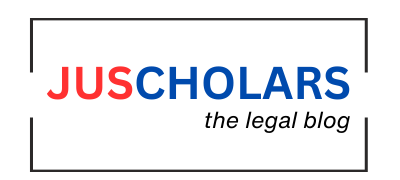Abstract
This blog argues that India’s existing copyright framework is doctrinally inadequate to address the complexities of generative artificial intelligence (AI). It moves beyond a descriptive analysis to present a novel, two-pronged legislative solution. We contend that the anthropocentric definition of “author” in the Indian Copyright Act, 1957, coupled with the ambiguity of the “skill and judgment” test from Eastern Book Company v. D.B. Modak, creates a legal vacuum.
This blog puts forth two primary arguments: first, that the threshold for human authorship in AI-assisted works must be clarified through a new “Substantive Creative Contribution” test. Second, for works with minimal human input, we propose the creation of a sui generis “Producer’s Right” to protect investment without diluting traditional copyright. Furthermore, I analyse the critical, unaddressed issue of AI training data, arguing that the fair dealing exceptions under Section 52 of Indian Copyright Act, 1957 are insufficient, thus tainting the legal status of AI outputs. By synthesizing lessons from global jurisdictions, this paper outlines a concrete legislative path forward for India.
Keywords: Artificial Intelligence (AI), Indian Copyright Act, 1957, Authorship, Substantive Creative Contribution, Sui Generis Rights, AI Training Data, Fair Dealing, Section 52, Legislative Reform.
I. Introduction: The Doctrinal Crisis
The advent of generative artificial intelligence (AI) represents not merely a technological leap but a fundamental challenge to the core tenets of copyright law. While legal scholarship has focused on whether AI-generated works can be protected, this blog argues that this question is secondary. The primary issue is that the Indian Copyright Act, 1957, is built on a foundation of human creativity that is becoming increasingly unstable. Its provisions, conceived for a pre-digital and certainly pre-generative AI era, are now being stretched to their breaking point.
This blog posits that merely attempting to fit AI into existing legal boxes is a flawed approach destined for doctrinal inconsistency. Instead, we argue for a deliberate legislative overhaul. We should propose a two-pronged framework: one that clarifies the standard for human authorship in human-AI collaborations and another that creates a novel, limited right for works where human creative input is negligible. This approach is supplemented by addressing the foundational issue that precedes all output: the legality of the data used to train the AI itself, a matter on which the Indian Act is perilously silent.
Ii. Deconstructing India’s Copyright Framework: An Anachronistic Fit
A. The ‘Computer-Generated’ Anachronism
While India appears progressive with Indian Copyright Act Section 2(d)(vi), which assigns authorship of a “computer-generated” work to “the person who causes the work to be created,” this provision is an anachronism. Introduced by a 1994 amendment, it was designed for a world of rudimentary software outputs, not for generative AI that mimics human cognitive and creative processes. To apply this provision to modern AI is to equate the deterministic output of a calculator with the probabilistic, stylistically complex output of a Large Language Model. This creates a legal fiction that obscures the real questions of creativity and originality.
B. The Ambiguity of the ‘Skill and Judgment’ Test
The Supreme Court’s rejection of the “sweat of the brow” doctrine in Eastern Book Company v. D.B. Modak established “skill and judgment” as India’s originality standard. While effective for human-created works, this test becomes highly ambiguous when applied to AI. It raises critical, unanswered questions:
How does a court objectively measure the “skill” involved in prompt engineering?
Is a single, brilliantly crafted prompt more indicative of “judgment” than a lengthy, iterative dialogue with an AI?
At what point does human curation and editing of AI output cross the threshold from mere arrangement to original authorship?
Without legislative clarification, the ‘Skill and Judgement test’ is poised to generate a wave of inconsistent and unpredictable judicial outcomes, stifling both creators and innovators who rely on AI tools.
C. The Tainted Input: AI Training Data and Fair Dealing
The most novel and pressing legal challenge is not the copyright of the output, but the legality of the input. AI models are trained on vast quantities of data, much of which is copyrighted. Does this mass ingestion of data for training constitute infringement? Proponents might look to the fair dealing exceptions under Section 52 of the copyright Act, 1957, particularly for “private or personal use, including research.”
However, this argument is weak. The training of commercial AI models is neither private nor personal, and it often extends beyond pure research into commercial product development. Consequently, a strong case can be made that the training process for most major AI models constitutes mass copyright infringement under Indian law. This creates a “fruit of the poisonous tree” dilemma: if the AI model itself is an infringing work, can any output it generates ever be legally sound? This foundational issue undermines the entire debate about output copyright and requires urgent legislative attention.
iii. Lessons From Global Frameworks: A Path For India
A comparative analysis should not be a mere catalogue, but a source of prescriptive insight. Let’s delve into it.
- United Kingdom: The UK’s Section 9(3) of the CDPA 1988, assigning authorship to the person who makes the “arrangements necessary,” offers a lesson in proactive legislation. However, its broadness is also a weakness, as it could over-reward the entity that merely provides capital or computing power.
Lesson for India: Legislation should focus on who owns actual creative authority, not exclusively the operational setup.
- United States: The strict human authorship regulation specify by the U.S. copyright office establishes transparency; however, it may not allow adequate flexibility,as a result risking the exclusion of significant works generating from collaborations between human and AI.
Lesson for India: Stay away from using absolutes. A detailed and structured approach is more functional than a rigid, singular rule.
- European Union: The EU’s AI Act, offers an important non copyright solution focusing on transparency and labelling.
Lesson for India: Courts and consumers can have necessary information to verify claims of human authorship and originality if there is a mandate for the disclosure of AI.
iv. A Proposed Legislative Framework For India
This blog advocates for a three-part legislative reform initiative to build a copyright system that is clear, fosters innovation, and is prepared for the age of AI.
1. Redefine Authorship for AI-Assisted Works:
Amend the Copyright Act to introduce a “Substantive Creative Contribution” test for works created with AI assistance. This would clarify the Modak standard by requiring a claimant to demonstrate significant intellectual intervention beyond mere prompting. Criteria could include:
- Evidence of iterative refinement of AI outputs.
- Significant selection, arrangement, and modification of generated content.
- The integration of AI-generated material into a larger original work where the human’s contribution forms the core expressive value.
2. Introduce a Sui Generis ‘Producer’s Right’ for AI-Generated Works:
For works with minimal or no human creative input, create a new sui generis right. This would not be a traditional copyright but a neighbouring right designed to protect investment.
- Rightsholder: The person or legal entity that made the substantial technical and financial investment necessary to generate the output.
- Scope of Protection: Protection against literal reproduction and distribution of the generated output.
- Term: A shorter term of protection, such as 15-25 years from the date of generation, balancing investment incentive with the need to enrich the public domain.
3. Create a Legal Safe Harbour for AI Training:
To resolve the training data dilemma, amend Section 52 to introduce a specific exception for Text and Data Mining (TDM) for the purpose of AI training. This exception should be carefully balanced, requiring that:
- The training entity has lawful access to the source data.
- The rights holders of the source data have the ability to opt out of having their works used for commercial AI training.
For India to move beyond its anachronistic laws, India should adopt this type of comprehensive framework, regulate the intersection of creativity and technology and provide a legal certainty to foster innovation.
Author Name- Shreeram Meena is a Student, 2nd Year, BALLB (Hons.) at Dharmashastra National Law University (DNLU)






